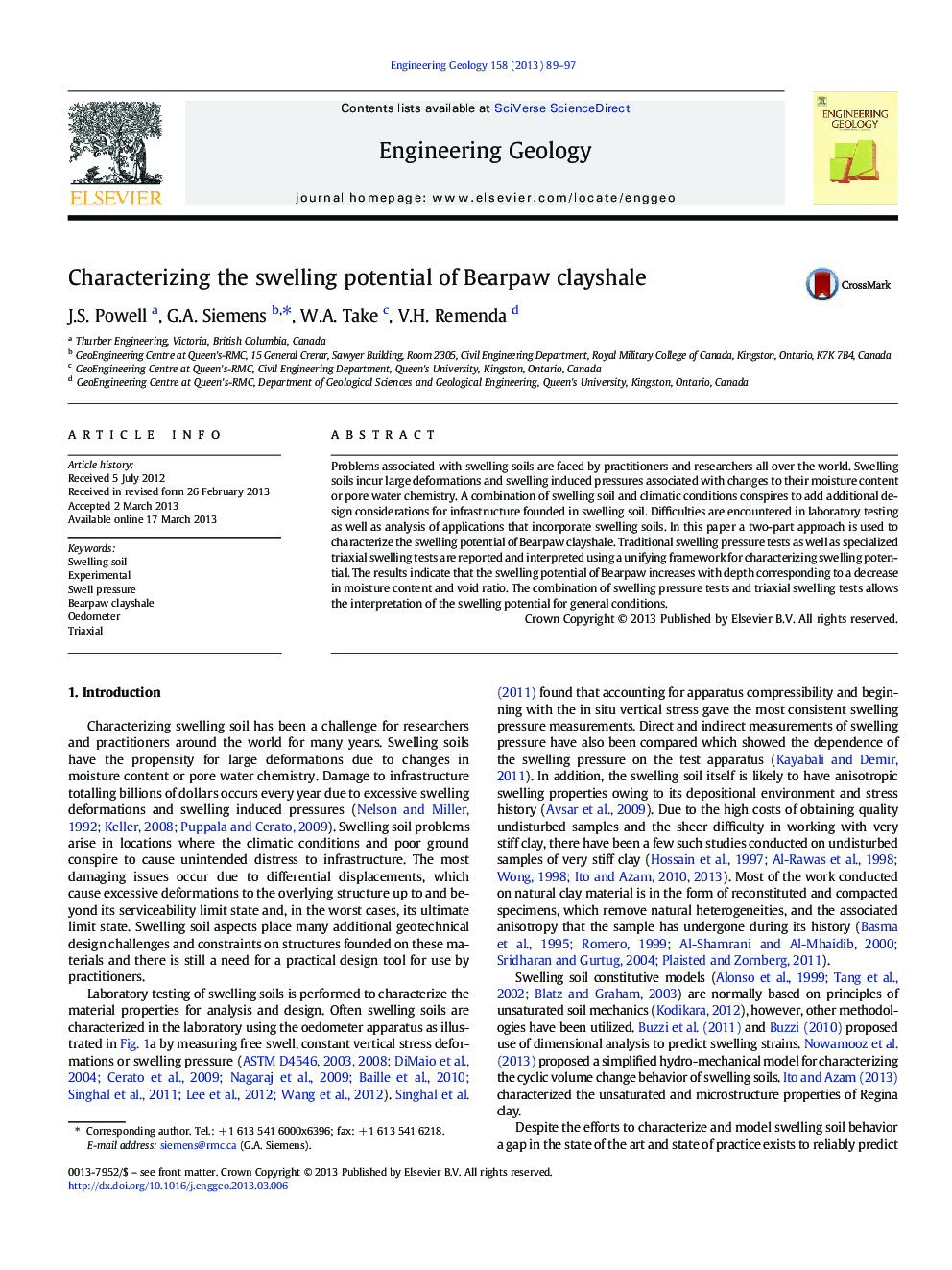| Article ID | Journal | Published Year | Pages | File Type |
|---|---|---|---|---|
| 4743721 | Engineering Geology | 2013 | 9 Pages |
•Bearpaw clayshale swelling potential measured in laboratory using oedometer and new triaxial swelling test•Triaxial swelling results interpreted to develop swell equilibrium limit for Bearpaw Shale•Swelling pressure compared with triaxial swelling result to quantify swelling potential with depth
Problems associated with swelling soils are faced by practitioners and researchers all over the world. Swelling soils incur large deformations and swelling induced pressures associated with changes to their moisture content or pore water chemistry. A combination of swelling soil and climatic conditions conspires to add additional design considerations for infrastructure founded in swelling soil. Difficulties are encountered in laboratory testing as well as analysis of applications that incorporate swelling soils. In this paper a two-part approach is used to characterize the swelling potential of Bearpaw clayshale. Traditional swelling pressure tests as well as specialized triaxial swelling tests are reported and interpreted using a unifying framework for characterizing swelling potential. The results indicate that the swelling potential of Bearpaw increases with depth corresponding to a decrease in moisture content and void ratio. The combination of swelling pressure tests and triaxial swelling tests allows the interpretation of the swelling potential for general conditions.
